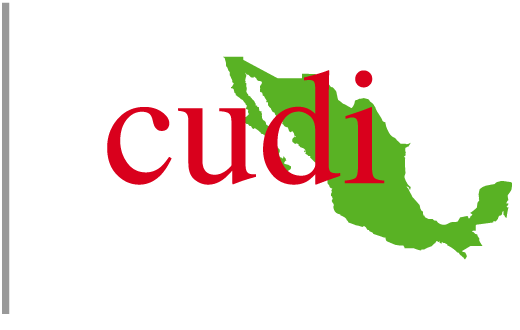Mostrar el registro sencillo del ítem
Enfermedades de Fauna Silvestre: Clase 17
| dc.contributor.author | Lowenberger, Carl | |
| dc.coverage.spatial | México | es_MX |
| dc.date.accessioned | 2017-04-11T17:51:45Z | |
| dc.date.available | 2017-04-11T17:51:45Z | |
| dc.date.issued | 2017-04-06 | |
| dc.identifier.other | http://www.cudi.edu.mx/eventos/enfermedades-de-fauna-silvestre | es_MX |
| dc.identifier.uri | https://hdl.handle.net/11305/1512 | |
| dc.description | Jueves 6 de abril de las 11:00 a las 13:00 horas del centro de México. Innate immune interactions between vectors and the parasites they transmit. Dr. Carl Lowenberger | es_MX |
| dc.description.abstract | Curso ofertado por la Maestría en Ciencias en Manejo de Recursos Naturales de la Universidad de Guadalajara y la Comunidad de Estudios Socioambientales de la Corporación Universitaria para el Desarrollo de Internet. Insects serve as the vectors for many pathogens and parasites that cause disease in humans and animals. What happens inside the vector? Why do only some insects serve as vectors, and what limits which parasites will be transmitted by which vectors?. Essentially, the innate immune system of the insects is the means by which vectors recognize the presence of parasites. These recognition factors and the immune responses are strongest in the body cavity or hemocoele of the insect through which the hemolymph flows. If the parasite is recognized by the insects’ immune system a chain of biochemical events takes place with several signal transduction pathways. Ultimately, the parasites are phagocytosed by hemocytes if they are small. Larger parasites are encapsulated by hemocytes (blood cells) and melanized, and many small antimicrobial peptides are expressed that eliminate pathogens. Some parasites avoid the immune responses by remaining in the intestine of the vector. Some parasites turn off the immune system of their hosts. Other parasites/pathogens go inside cells where they cannot be seen by the immune system. Ultimately the parasites/pathogens must be transmitted, and whether they replicate within the insect vector or just transform to a different developmental stage depends on the parasites. In this presentation we will explore how vectors recognize pathogens, and how these immune responses ultimately determine whether a vector will eliminate of transmit a parasite. | es_MX |
| dc.language.iso | es | es_MX |
| dc.publisher | Corporación Universitaria para el Desarrollo de Internet | es_MX |
| dc.relation.ispartof | Curso Enfermedades de Fauna Silvestre | es_MX |
| dc.relation.ispartofseries | 170406-Estudios Socioambientales | es_MX |
| dc.rights | Atribución/Reconocimiento-NoComercial 4.0 Internacional | es_MX |
| dc.rights.uri | https://creativecommons.org/licenses/by-nc/4.0/deed.es | es_MX |
| dc.title | Enfermedades de Fauna Silvestre: Clase 17 | es_MX |
| dc.type | Audio | es_MX |
| dc.type | Foto | es_MX |
| dc.type | Presentación | es_MX |
| dc.type | Video | es_MX |
| dc.activity | Curso | es_MX |
| dc.contributor.coordinator | Cárdenas, Oscar | |
| dc.institution.author | Simon Fraser University | es_MX |
| dc.institution.coordinator | CUCSUR | es_MX |
| dc.institution.moderator | CUCSUR | es_MX |
| dc.presentation.title | Innate immune interactions between vectors and the parasites they transmit | es_MX |
| dc.subject.cudi | Estudios Socioambientales | es_MX |
| dc.subject.keyword | Enfermedades de Fauna Silvestre | es_MX |
| dc.subject.keyword | Innate immune interactions between vectors and the parasites they transmit | es_MX |
| dc.subject.keyword | Simon Fraser University | es_MX |
| dc.subject.keyword | UDG | es_MX |
| dc.subject.keyword | CUCSUR | es_MX |
| dc.subject.keyword | Centro Universitario de la Costa Sur | es_MX |
| dc.subject.keyword | Estudios Socioambientales | es_MX |
| dc.subject.keyword | Enfermedades | es_MX |
| dc.subject.keyword | Fauna silvestre | es_MX |
| dc.subject.keyword | Flora y Fauna | es_MX |
| dc.subject.keyword | Chikungunya | es_MX |
| dc.subject.keyword | Chagas | es_MX |
| dc.subject.keyword | Zika | es_MX |
| dc.subject.keyword | Dengue | es_MX |
| dc.backup | C:\CUDI\videos\2017\estudios_sociambientales\Curso_Enfermedades_Fauna_Silvestre\17_04_06 | es_MX |
| dc.contributor.moderator | Martínez, María Magdalena |
Ficheros en el ítem
Este ítem aparece en la(s) siguiente(s) colección(ones)
-
Curso Enfermedades de Fauna Silvestre
Videos del curso Enfermedades de Fauna Silvestre





